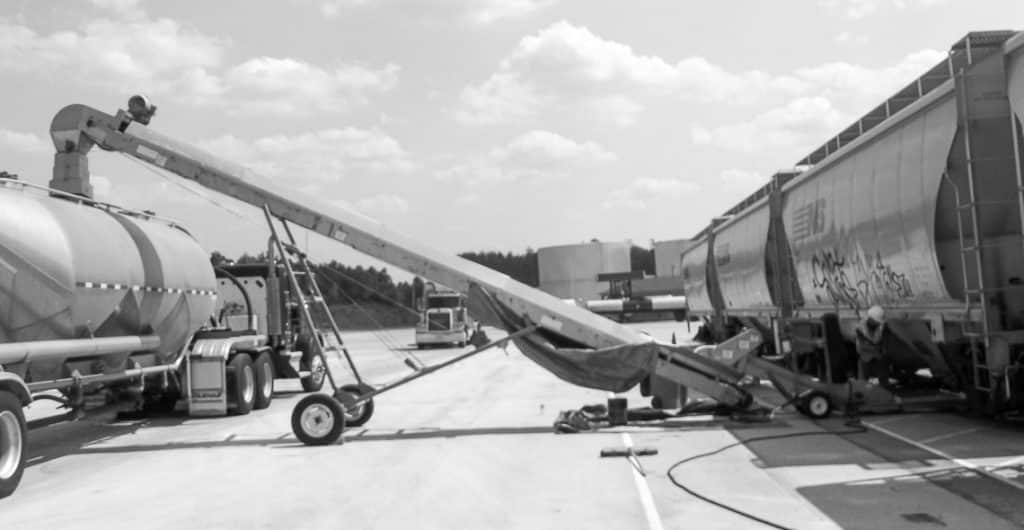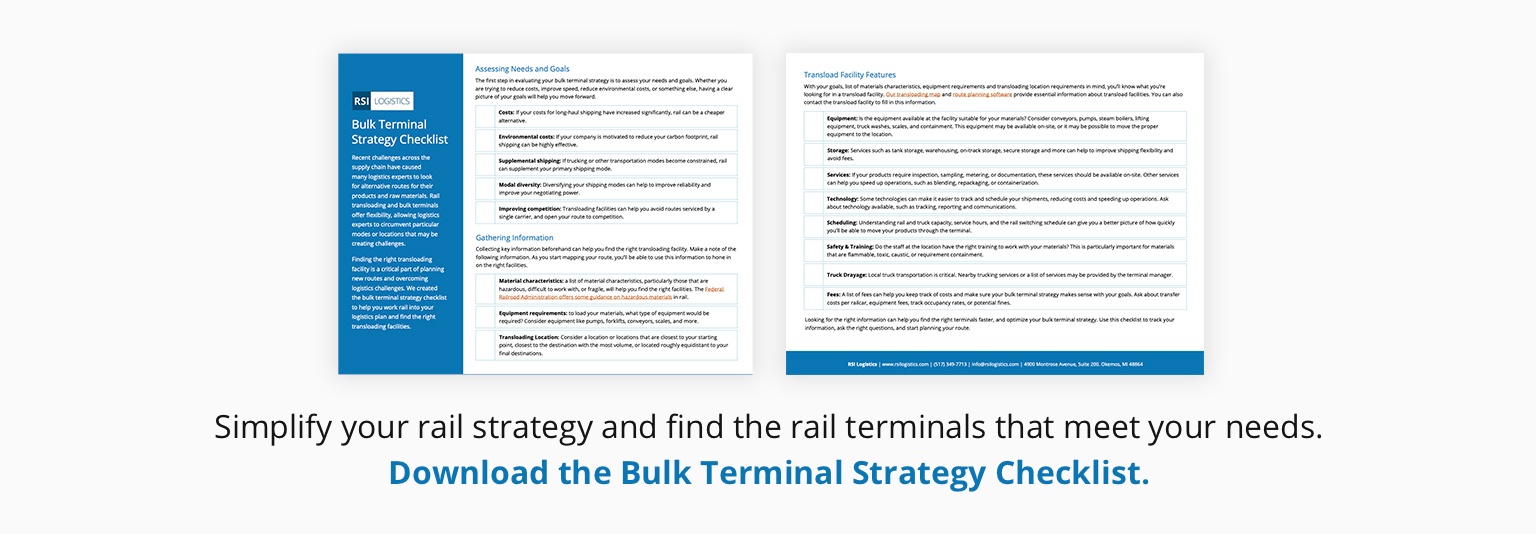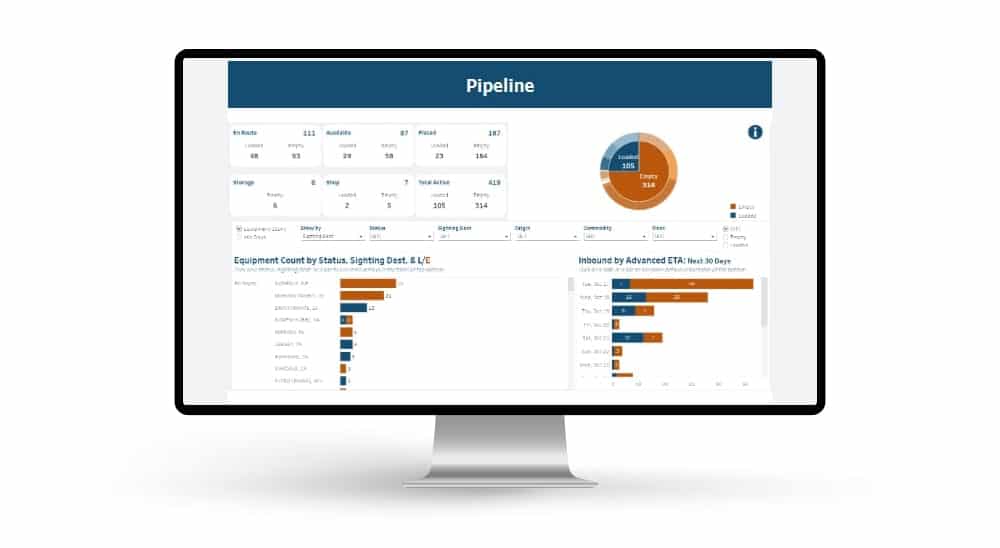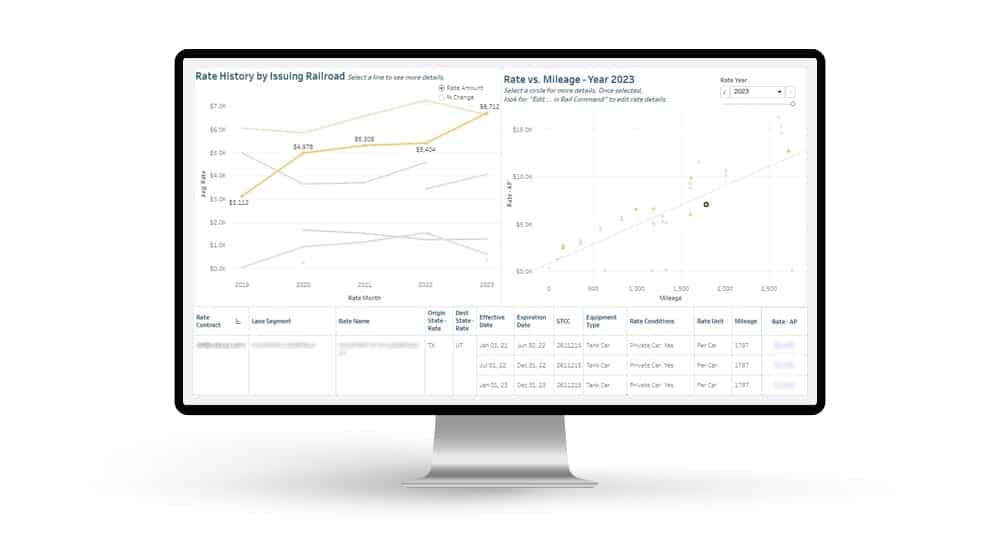Background on Bulk Terminals
Transloading is the process of transferring a shipment from one mode of transportation to another. It is commonly relied on when one mode cannot be used for the entire trip, such as when a producer who is served by rail, but the receiver can only receive deliveries by truck.
Since transloading requires the handling of goods, it has the potential to cause a risk of damage. Therefore, transloading facilities are designed with the intent of minimizing handling. Many bulk commodities require specialized material handling equipment to ensure product integrity and safety.
Back in the early 1960’s, the New York Central Railroad was the first rail carrier to experiment with rail-to-truck bulk transfer terminals which was trademarked as FlexiFlo™. The marketing tagline for the FlexiFlo™ terminals promised shippers that they could, “receive the low-cost benefit of long-haul rail transportation, with the speed and flexibility of local truck delivery”.
Companies utilize bulk terminals in several ways. Some shippers rely heavily on the North American bulk terminal network to distribute their bulk commodities. While others utilize terminals on more of a spot basis. There are three primary reasons why all companies make the decision to utilize bulk terminals:
- The end receiver is not serviced by rail, or if they are, the receiving location is only capable to receive by truck,
- The volume to the end receiver(s) is substantial enough to ensure that railcars can move quickly through the terminal, and
- The distance from the producing origin to destination is greater than 800 highway miles.
Bulk transfer terminals typically accommodate various dry and liquid commodities such as Plastics, Chemicals, Fuels, Food Grade products, Minerals, Aggregates, Lumber and Municipal Waste.
Selecting a Bulk Terminal
When considering the location of a bulk terminal, shippers need to take into consideration the location of the terminal relative to the final destinations. Since truck is the costliest mode, a targeted terminal should be within proximity to the receivers. If a terminal is going to supply various destinations, the terminal location should favor the highest volume destinations to minimize the truck cost.
Another important part of terminal selection is ensuring that the rail carrier servicing the terminal allows for the lowest rail transportation costs. Rail rates are “typically” a function of the least number of carriers in the route and rail miles. But, since the railroads market-price, many shippers have been looking towards short line railroad served terminal alternatives. If a short line can receive carloads in interchange with 2 or more Class I railroads, it typically creates more competitive rail pricing.
Equally as important as to the proximity to end receivers and servicing rail carrier, the selected terminal must be able to provide the proper service requirements using the correct equipment, standardize processes and a commitment to safety.
Bulk Terminal Strategy
To develop an overall bulk terminal strategy, shippers need to analyze their entire network. Shippers need to ask some of the following questions:
- Are we using the right terminals?
- Has our business changed over the years to warrant an updated review?
- How much potential savings could I realize with an alternative rail routing?
- Can I offer new business to a rail carrier to leverage lower rail costs elsewhere?
- Have our current terminal storage charges increased significantly?
- When is the last time we performed a safety audit on our transload locations?
There are several variables that are important to consider when developing your bulk terminal strategy. RSI has been assisting rail shippers for over 30 years to provide rail management services, software solutions and bulk terminal operations. RSI has developed a Bulk Terminal Directory that provides shippers with visibility of North America’s bulk transloading network. Additionally, if you are interested in having RSI develop a Transloading Plan for you please let us know.




 Automated exception reporting of the railcar tracking data makes it easy to identify and troubleshoot jeopardized shipments, thereby enabling you to provide better service to your stakeholders.
Automated exception reporting of the railcar tracking data makes it easy to identify and troubleshoot jeopardized shipments, thereby enabling you to provide better service to your stakeholders. Receive notification of pending rate expirations. Tariff changes and fuel surcharges can be automatically updated.
Receive notification of pending rate expirations. Tariff changes and fuel surcharges can be automatically updated.